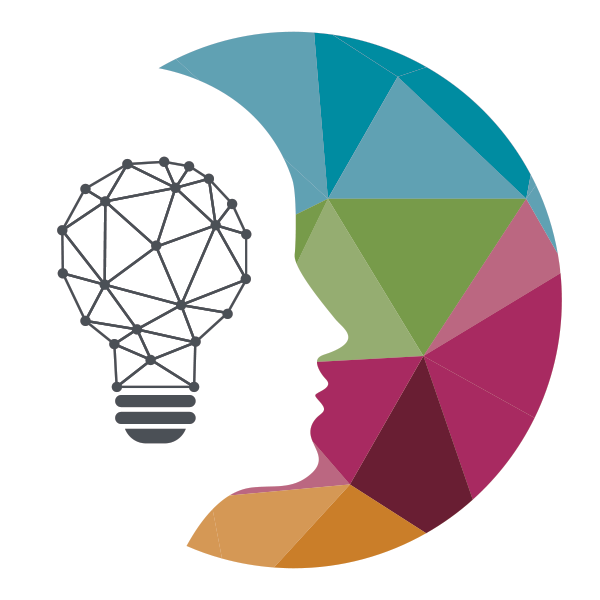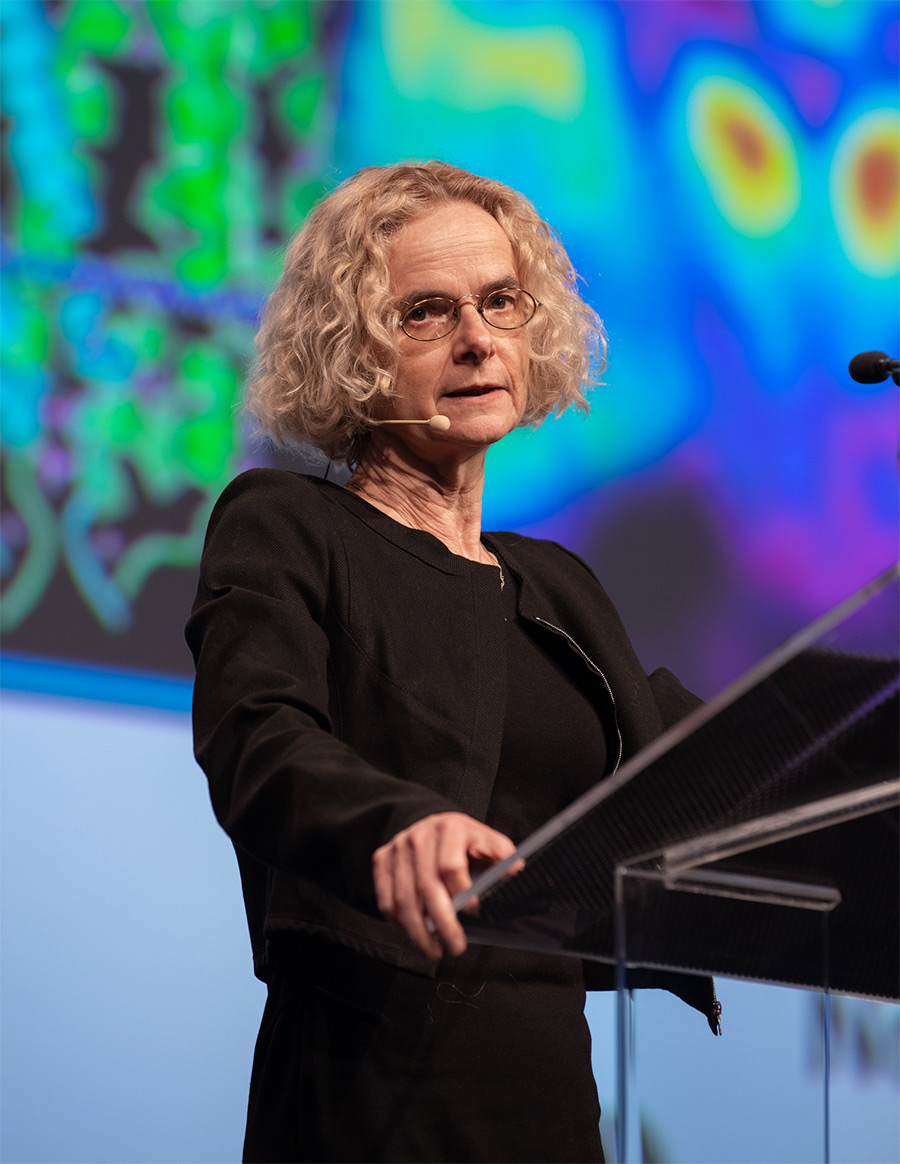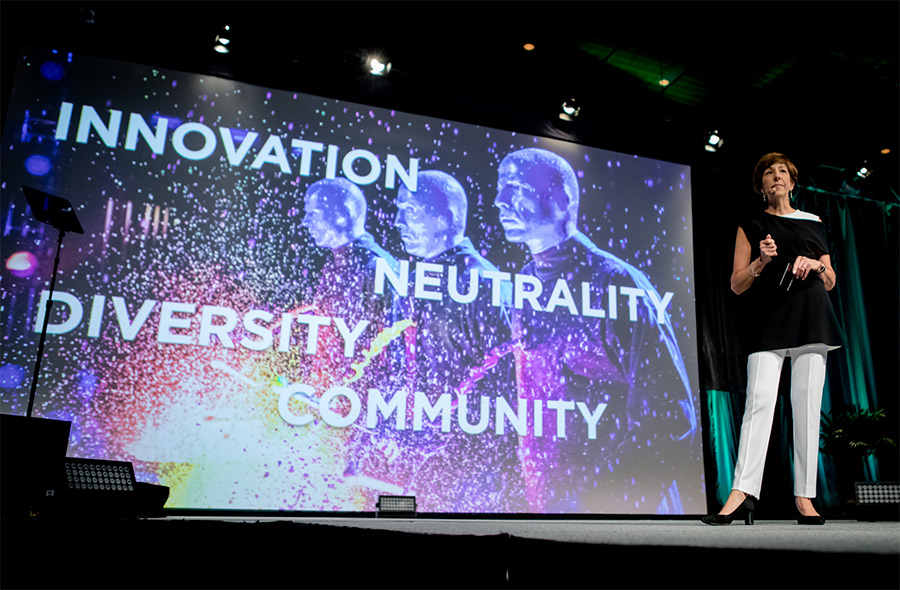Proceedings: DIA 2018 Global Annual Meeting

This is the Time and Place to HEAL
Keynote Address
Chris M. Slawecki
DIA Senior Digital Copy Editor
he three-piece performance art company Blue Man Group started the DIA 2018 Opening Plenary with an audio-visual industrial serenade before escorting DIA Global Chief Executive Barbara Lopez Kunz onstage. “If I was anywhere else, I’d say that’s a tough act to follow,” she laughed. Barbara explained that the same principles of innovation, neutrality, diversity, and community upon which Blue Man Group was founded are also foundational pillars for the growth of DIA. “We bring these characteristics to life in the work we do every day,” she said.
After DIA Board Jay Roberts and Chair-Elect Joseph Scheeren jointly introduced videos honoring DIA’s 2018 Global Inspire Award winners, our DIA 2018 Honorary Co-Chairs were introduced by Sudip Parikh, Senior VP and Managing Director, DIA Americas: Regulatory Co-Chair Dr. Tatsuya Kondo, Chief Executive of the PMDA, Japan; and Industry Co-Chair Dr. Julie Gerberding, Executive Vice President and Chief Patient Officer, Strategic Communications, Global Public Policy, and Population Health, at Merck & Co., Inc.
Gerberding introduced Kondo to the audience as the Chief Executive whose leadership helped to elevate PMDA to the status of a world-class regulatory agency and eliminated the notorious “drug lag” in Japan; he returned the favor by introducing her experience in government health policy and service as patient advocate in industry. Kondo praised DIA’s “unique multi-disciplinary forum, a safe place to have challenging conversations.” Gerberding noted that, “Patients are active participants in, and key contributors to, our discussions this week.”

Keynote Speaker Dr. Nora Volkow, Director, National Institute on Drug Abuse
DIA 2018 convened against the tragic backdrop of America’s opioid addiction and abuse epidemic. In 2016, an estimated 20.1 million Americans were dependent on drugs or alcohol. But only about 3.8 million received treatment for their dependence, many outside traditional healthcare settings (such as in prison). Keynote Speaker Dr. Nora Volkow, Director of the National Institute on Drug Abuse (NIDA), National Institutes of Health, asked attendees if they’ve ever thought what they can do about it.
“This crisis was born out of the good intentions of the healthcare system to help patients combat chronic pain,” she began. These intentions were quickly battered by two misconceptions: (1) that doses could safely be increased because the body would tolerate and become accustomed to them, and (2) that these products were not addictive. Overprescribing was further complicated by patients pursuing relief from drugs outside of prescriptions. The 2014 introduction of synthetic opiates like fentanyl catalyzed the current crisis. “People become slaves to the drug,” she suggested. “It’s like driving a car without brakes. You may want to stop, but without the brakes you cannot do it.
How do we use research and partnerships to help patients? Volkow asked. First, we must come up with safer, more effective pain management strategies or we’ll never fix it. Targeted opioid analgesics, non-opioid analgesics (such as cannabinoids), and biologics present promising pharmaceutical therapies, as do non-drug therapies such as electronic brain stimulation.
Opioid dependence treatment modalities must include helping patients out of their dependence. There is one silver lining in these dark clouds: We have three different medications to treat heroin addiction; for cocaine addiction or alcoholism, there isn’t even one. One of these drugs, naloxone, can actually reverse an overdose, if the right dose is administered in time. Naloxone prescriptions have tripled over the past twelve months.
Volkow overviewed important NIDA research into how to better integrate pain and substance abuse management into healthcare systems and practices. For example, many emergency rooms administer naloxone to reverse an overdose. Can emergency rooms release these patients into treatment regimens (in-patient stays or out-patient medication) instead of putting them back into the circumstances that led them to their overdose?

DIA Global Chief Executive Barbara Lopez Kunz explains the characteristics shared by DIA and the Blue Man Group.
“Science is what gives us the opportunity to look at something in a completely different way,” she explained. The science of electronic brain stimulation holds enormous promise for pain management and addiction treatment. Vaccines are now being developed that bind with heroin or cocaine to prevent them from traveling through the blood to the brain.
Academia can generate the research knowledge, but industry must operationalize and commoditize it. The ties between these two must grow stronger through public/private partnerships and similar collaborations. One example of such collaboration is the HEAL Network (Helping to End Addiction Long-Term), launched in April 2018 to bring government, science, academic, regulatory, and service agencies together with patient and industry groups, which Congress has funded with more than $1 billion for FY 2018.
In the 45 minutes it took to deliver her address, she noted, another five people died. “What’s going on in this country is something we should not permit,” Volkow concluded.

